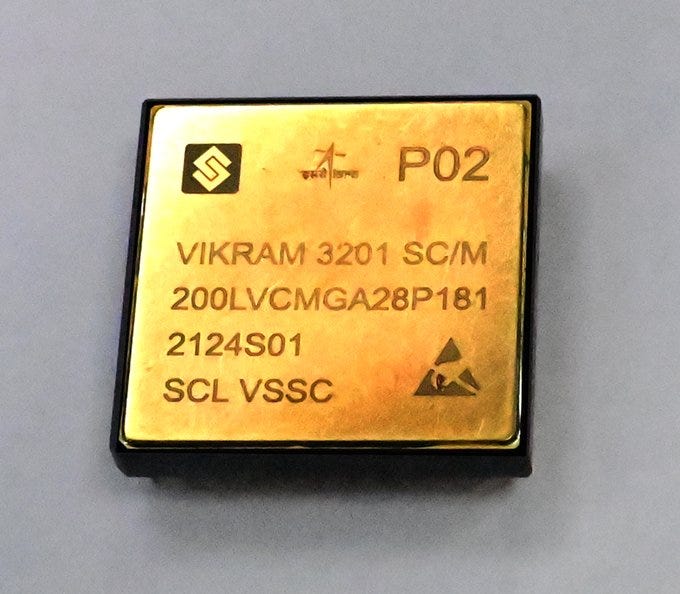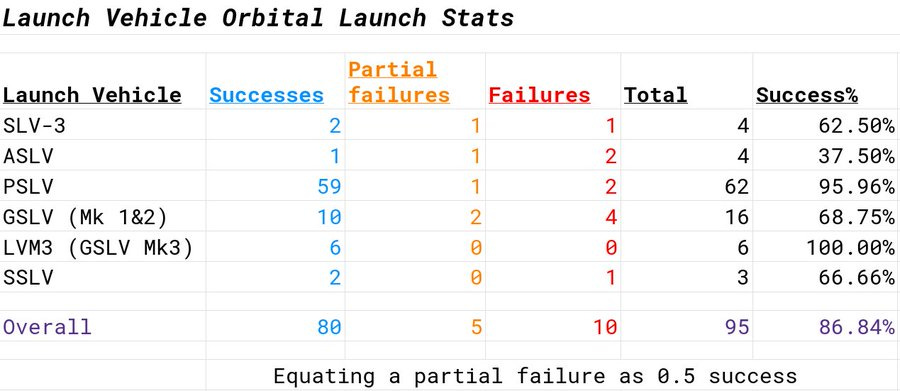Pradeep's Space Newsletter #63
Mostly just a lot of SpaDeX mission launch and post-launch updates, with a few interesting stories and links at the bottom.
SpaDeX updates
The PSLV-C60 mission successfully launched two SpaDeX satellites - SpaDeX A and SpaDeX B - into a 475 km orbit. An hour and a half later, the fourth stage was to fire for 7 seconds and move into a 350 km orbit for the operation of PSLV Orbital Experimental Module (POEM-4) carrying 24 payloads.
I wanted to appreciate how proactive ISRO PR on this mission was and also taking care to upload things on its website what it shared on social media as well.
Sri Saidatta on X did a good job of collecting many of the mission patches.
The r/ISRO sub-Reddit shared NORAD details to confirm that orbit change. There has been no official update from ISRO about this, yet.
s2a systems, a Swiss company which operates an optical space surveillance system spotted the two satellites flying over their observation sites in South America and Europe and shared the details on X. They shared that the distance between the two satellites was 1.7 km at 11 am (IST) on 31 December 2024 over South America and at 5.7 km near 11 pm (IST) on 31 December 2024 over Europe.
Kepler Aerospace also shared on LinkedIn that they supported the SpaDeX mission in “simultaneous mode” as a precursor to future human spaceflight and space station missions. From their LinkedIn post:
Our global network of ground stations played a pivotal role, marking several firsts in Indian space operations:
✅ Reception of the inaugural telemetry data from SPADEX chaser and target satellites at our station in Australia.
✅ Successful execution of simultaneous commanding for dual formation-flying satellites – a first for Indian mission operations.
✅ Comprehensive mission operations support, all prepared in under a month, validating Kepler’s Ground Station-as-a-Service (GSaaS) model for the fourth time with a repeat client.
Semi Conductor Lab, earlier with the Departmenet of Space and now under Ministry of Electronics and Information Technology also contributed to the mission. They tweeted:
SCL contribution in SpaDex Mission: Indigenously designed & fabricated Radiation hardened devices viz. Vikram 3201 and 2Mb SRAM flown successfully on 30.12.24 in PSLV-CA C60
.
It is not just Indian academia and private companies with experiments flying on-board the flight but various ground based private companies are also participating in this mission. ISRO had said during the launch broadcast that 11 ground stations would be tracking as a precursor to the Gaganyaan mission.
Manastu Space announced on LinkedIn that they fired their “green propulsion system” on board Vyom 2U and successfully tilted the POEM-4 by 24 degrees. This happened at 8:50 pm (IST) on 31 January 2024. From their LinkedIn post:
In a dramatic 𝟯𝟬-𝘀𝗲𝗰𝗼𝗻𝗱 𝗳𝗶𝗿𝗶𝗻𝗴, the thruster tilted the PSLV POEM-4 platform by 𝟮𝟰 𝗱𝗲𝗴𝗿𝗲𝗲𝘀, imparting an angular velocity of 𝟬.𝟱°/𝘀 before onboard systems seamlessly regained control. Over the coming days, PSLV will perform multiple critical maneuvers, culminating in 𝟱𝟬𝟬+ 𝘀𝗲𝗰𝗼𝗻𝗱𝘀 𝗼𝗳 𝗰𝘂𝗺𝘂𝗹𝗮𝘁𝗶𝘃𝗲 𝗶𝗻-𝘀𝗽𝗮𝗰𝗲 𝗳𝗶𝗿𝗶𝗻𝗴 𝘁𝗶𝗺𝗲, cementing the success of this 𝗜𝗻-𝗢𝗿𝗯𝗶𝘁 𝗗𝗲𝗺𝗼𝗻𝘀𝘁𝗿𝗮𝘁𝗶𝗼𝗻 (𝗜𝗢𝗗) of Manastu Space’s Green Propulsion system VYOM 2U based on MS289 green propellant.
The propellant that we use currently, hydrazine, on our launch vehicles is considered as a carcinogenic and also not safe nor sustainable. Hence, this green propellant is a big deal.
Bellatrix Aerospace that builds propulsion systems for satellites also announced on LinkedIn that they fired their in-house engine, Rudra. From their LinkedIn post:
Disturbance imparted on POEM body in Yaw axis was 1.4 deg/s for a 60 second firing. 80 degrees angular rotation of the POEM platform was observed.
BGS ARPIT announced on Instagram about receiving data from thier payload on POEM-4:
Yesterday, we successfully launched the BGS ARPIT payload into space, and today we’ve received the first set of images and telemetry data from multiple ground stations across India. These initial readings mark a significant achievement in our mission, showcasing the seamless integration of space technology with ground operations.
I wrote a detailed article for The Hindu [paywalled] that looks at the PSLV-C60 mission as well as many of the payloads on POEM-4. This was published in the morning of 30 January 2024.
I live-tweeted and live-tooted the launch. I got to relive the old days.
SPADEX-A separated three seconds after SPADEX-B. PSLV imparted a delta-v (a difference in velocity between the two satellites) of 10 m/s. This led to the slowly increasing distance between the two satellites that s2a system tracked.
Chairman Somanath said that the nominal docking date is 7 January 2024. M Shankaran, Director, U R Rao Satellite Center, gave a really long speech about the actions that the two SPADEX satellites will take over the next few days before it rendezvous, docks, and undocks. Chethan Kumar from the Times of India provided this nice summary of these remarks:
And like twins, the satellites will be going around in the same orbit with the same speed. The mission timeline includes a four-day waiting period to achieve optimal solar orientation, crucial for generating sufficient power during the docking procedure. 4/n
This explains why the docking isn’t happening immediately. Back to the thread:
Several new sensors developed by Isro’s LEOS in Bengaluru will be evaluated for their fitness for initiating the docking sequence, which will start once the inter-satellite distance is reduced to 1.5km, utilising three different guidance algorithms. 7/n
The docking mechanism involves a “hugging” action. “The final approach will be particularly delicate. With a constant velocity of about 10mm/s, the chaser satellite will go and enter into the target satellite… 8/n
…The latches will be released and clamps on both sides will try to grab each of the satellites,” Sankaran added. 9/n
...And once they hold each other together, the ring which has been extended on the chaser satellite will be retracted so that the target satellite will be pulled towards the chaser satellite and the two will become as a single unit. 10/n
The satellite will then transfer power and power a heater. The joined satellites will then be controlled using the control systems of one of the satellites. This would be useful for the assembly of Bharatiya Antariksh Station (BAS).
The satellites would eventually undock and complete 2 year missions of their own. POEM-4 operations will continue over the next 2 months.
In a post-launch press conference, Somanath said that the docking could be seen live. He also said this was a precursor for much bigger and more complicated docking missions in the future.
I think 2025 will be the year of space robots and space docking.
SS AMUSAT demonstrates ultra onboard image compression
SS AMUSAT team demonstrated ultra onboard image compression of 80 times. They announced the milestone on their LinkedIn page.
98th or 99th launch?
ISRO called the PSLV-C60 launch the 99th launch from Sriharikota. Anshuman on X did the hard arithmetic and said that this calculation was not correct.
I asked if there was any change in the calculations if you considered only launches from the First and Second Launch pads, Anshuman said that that would make the PSLV-C60 mission the 98th one.
Vikram Sarabhai death anniversary
Physical Research Laboratory observes death anniversary of Vikram Sarabhai and Prof K R Ramanathan.
OrbitAid tests docking in zero-gravity flight in Florida
OrbitAid Aerospace tested their docking interface in a zero-gravity flight in Florida. From the report in the Business Standard:
OrbitAID Aerospace, an Indian space startup that is working on refuelling of satellites in space, has claimed to have successfully tested its patented Standard Interface for Docking and Refueling (SIDRP) on a zero-gravity flight in Florida.
This critical achievement validates SIDRP’s capabilities for on-orbit satellite servicing, including docking, refuelling, and proximity operations, in simulated space conditions.
Liquid first stage launch
I asked this question on X, Mastodon, and BlueSky:
Was there a first stage liquid launch from Sriharikota before TV-D01 or Agnikul's Sorted mission?
If you go to page 6 of the List of Sounding Rocket Launches from Sriharikota on www.shar.gov.in, you find mention of a RH-560+3 Ton Liquid rocket flown on 21 October 1976.
If you move ahead you find mention of a LPR-3T-MK1-02 (not sure what happened to 01) on 6 April 1978. LPR may be Liquid Propelled Rocket. 3T may be 3 tonnes.
I did not see any other mention of this on the web.
Ohsin on Mastodon replied with a pciture from From Space to Sea: My ISRO Journey and Beyond by A. E. Muthunayagam. Sharing the picture here:
Interesting Links
Indian Space Progress #23 by Jatan Mehta, nice round up of all the stories of this year. In case you forgot.
Moon Monday #206 by Jatan Mehta, nice round up of the state of lunar exploration for 2024.






